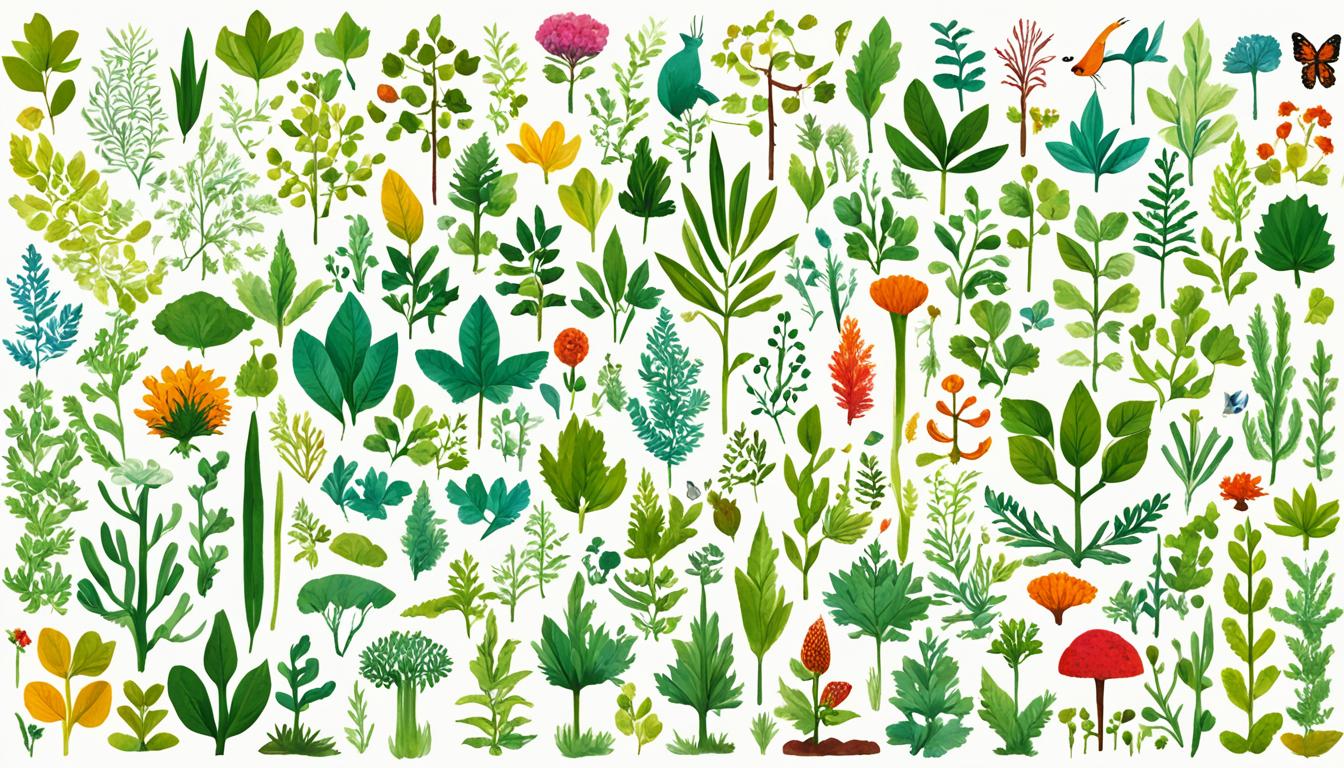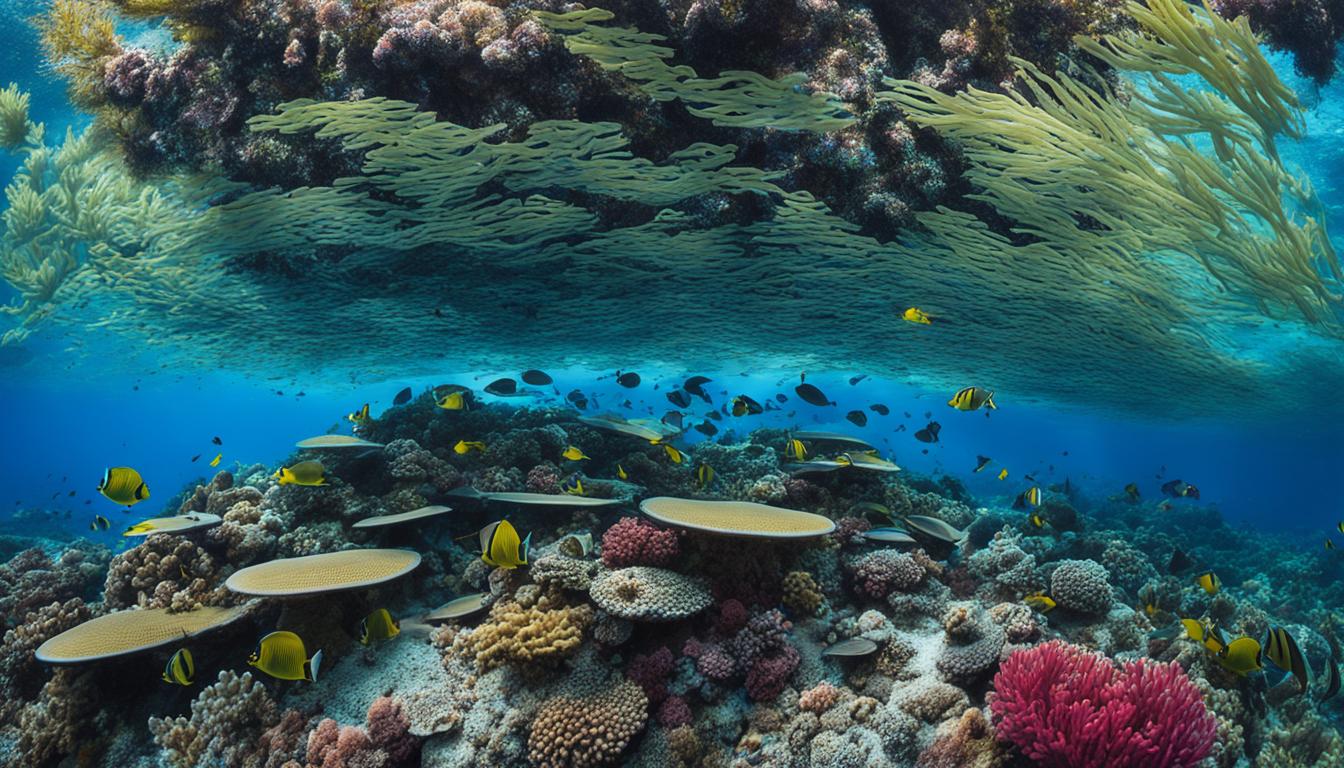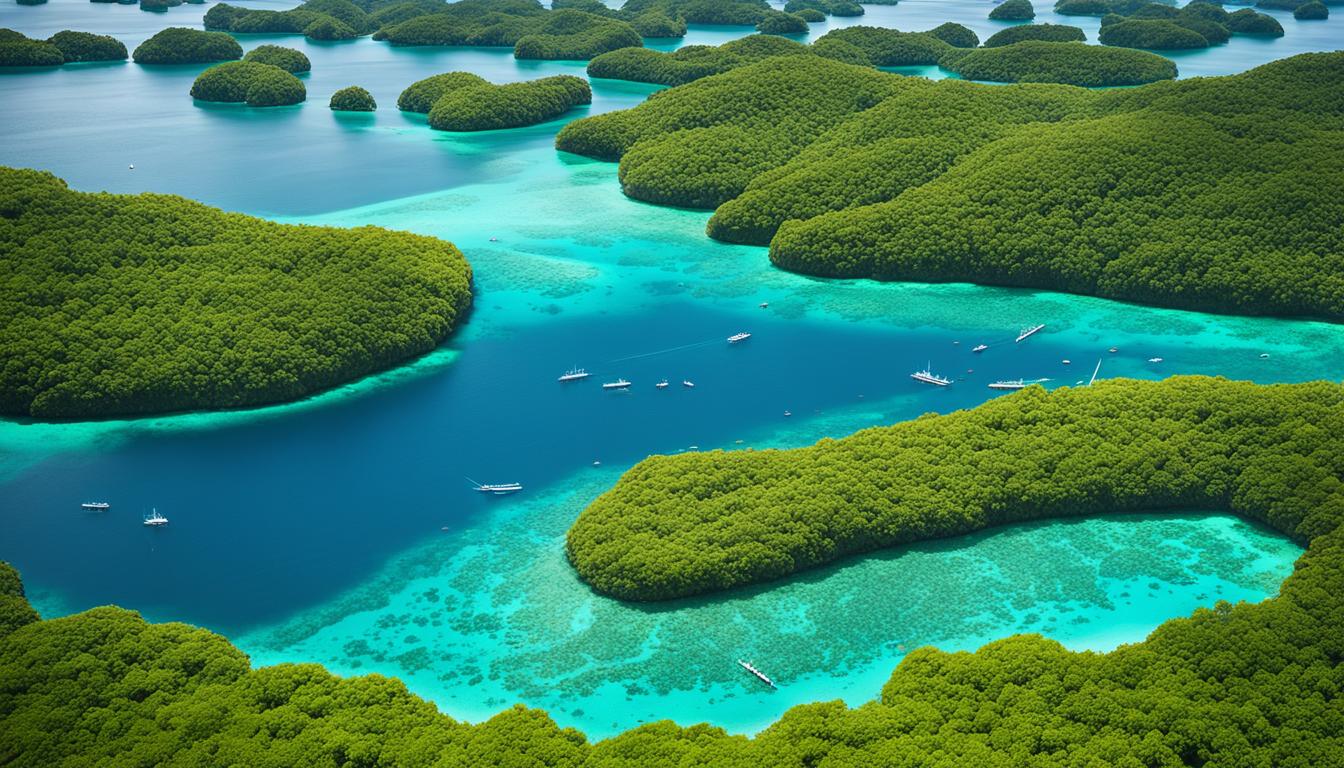Ireland Biodiversity: Animal and Plant Species and What Is Under Threat
- Jackie De Burca
- April 8, 2024
Ireland Biodiversity: Animal and Plant Species and What Is Under Threat
Ireland’s biodiversity is a treasure trove of diverse animal and plant species, constituting a rich tapestry of life. However, this exquisite natural heritage faces significant challenges and threats to its existence. The conservation of wildlife, protection of natural habitats, and preservation of endangered species are crucial for ensuring the survival of Ireland’s biodiversity for future generations.
“I love Ireland. I feel very at peace there. It’s just magical and beautiful.” Eva Green
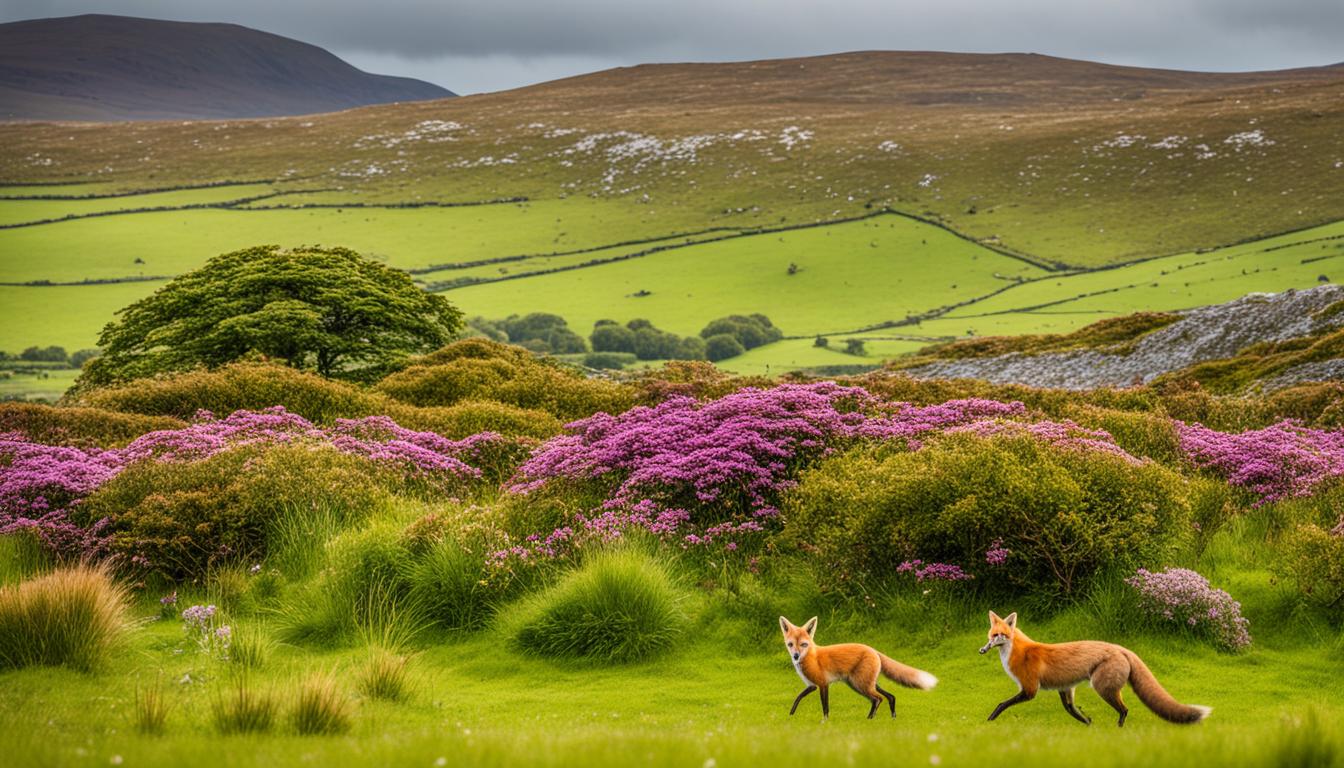
Biodiversity in Ireland: What We Don’t See
Ireland is often celebrated for its green fields, rugged coastlines, and rolling hills. But beneath the surface of these iconic landscapes lies a world of hidden biodiversity—ecosystems and species that quietly sustain the health of our environment.
The short film Biodiversity in Ireland: What We Don’t See draws our attention to the less visible layers of Ireland’s natural world: the pollinators that keep crops growing, the fungi breaking down organic matter in the soil, and the birds and mammals that rely on increasingly fragile habitats. These elements often go unnoticed, yet they are critical to ecological balance.
Human activity, climate change, and habitat loss are placing mounting pressure on Ireland’s ecosystems. Peatlands are being drained, hedgerows removed, and native species driven out. As the film highlights, it’s not just the loss of visible wildlife that matters—but the slow, silent disappearance of what sustains life itself.
Yet, there is hope. Across the country, community-led rewilding efforts, habitat restoration, and sustainable land management projects are gaining momentum. The film calls for greater awareness, stronger policy support, and a deeper connection with the natural world around us.
Biodiversity isn’t just about what we see—it’s about what we choose to protect.
In 2019, Ireland Was The First West-European Country To Use BIOFIN
In 2019, Ireland became the first Western European country to adopt the Biodiversity Finance Initiative (BIOFIN) methodology, marking a significant step in addressing its biodiversity challenges. Despite its verdant landscapes, Ireland faces a biodiversity crisis, with 91% of major habitat types in unfavorable conditions and species like the curlew and yellowhammer now on the Irish Red List of conservation concern.
“Winterfell is atop of this huge mountain in Northern Ireland, and you can see all these weather fronts coming in. Basically, the sky circles the mountain. It’s the most beautiful place.” — Kristian Nairn
The National Biodiversity Expenditure Review (NBER), conducted by Craig Bullock from University College Dublin and Rachel Morrison from the University of Exeter, utilised the BIOFIN methodology to assess Ireland’s biodiversity financing. Their findings revealed that 97% of biodiversity-related expenditures are managed by government departments and agencies, with a significant portion supported by European Union policies and transfers. Notably, 80% of these expenditures are linked to sustainable use initiatives aimed at reducing harmful agricultural and marine impacts.
The adoption of the BIOFIN methodology provided Ireland with a structured approach to track and analyze biodiversity finance flows, aligning them with national and international conservation targets. This initiative not only highlighted the existing funding mechanisms but also underscored the need for a more integrated and strategic financial planning to effectively mobilize resources for biodiversity conservation.
However In Ireland, The Biodiversity Crisis Is Still Alarming
The Intergovernmental Science-Policy Platform on Biodiversity and Ecosystem Services (IPBES) has released a global assessment highlighting an unprecedented decline in nature, with over one million species threatened with extinction. This deterioration of ecosystems jeopardises economies, food security, health, and quality of life worldwide, undermining progress toward 80% of the Sustainable Development Goals
In Ireland, the crisis is equally alarming. Out of approximately 31,000 known species, only about 10% have been assessed, revealing that 20% are at risk of extinction. Notably, one-third of bee species face extinction, and iconic fish like the Atlantic salmon, European eel, and angel shark have suffered catastrophic declines. Bird species such as the curlew and corncrake are also in severe decline. Additionally, habitats protected under the EU Habitats Directive have seen a deterioration in conservation status, and insect populations have significantly decreased, leading to quieter fields and hedgerows. Compounding these issues is the chronic underfunding of nature conservation by the government.

Despite these challenges, there are positive developments. The conservation status of some species protected under the Habitats Directive has improved, with six species showing positive changes and 80% now stable. Special agri-environment schemes target the conservation of species like the hen harrier, curlew, and freshwater pearl mussel. The All-Ireland Pollinator Plan has successfully engaged communities, businesses, and local authorities in proactive land management for pollinators and biodiversity. Public awareness is growing, with increased citizen science participation and a notable shift among farmers toward biodiversity-friendly practices.
Dr. Liam Lysaght, Director of the National Biodiversity Data Centre, emphasises the urgency of transformative change, including systemic reorganisation across technological, economic, and social factors. He advocates for policies requiring farms receiving subsidies to dedicate at least 20% of their land to biodiversity enhancement measures. Lysaght calls on the government to lead in addressing the biodiversity crisis, fostering an environment for honest, evidence-based discussions and collaborative solutions.

“I’d never had any problem finding inspiration; Ireland was always just there, you know? All this richness of culture was there to tap into.” — Brendan Gleeson
Ireland 4th National Biodiversity Action Plan
Ireland’s 4th National Biodiversity Action Plan (NBAP), titled “Actions For Nature”, charts a comprehensive course for conserving and restoring the nation’s biodiversity from 2023 to 2030. Launched in January 2024, the plan outlines 194 targeted actions aimed at reversing biodiversity loss and fostering a deeper societal commitment to nature conservation.
Ireland’s fourth National Biodiversity Action Plan (NBAP), titled “Actions for Nature”, represents a significant shift in the nation’s approach to biodiversity conservation. For the first time, the plan is underpinned by legislation, imposing legal obligations on public bodies to actively participate in biodiversity protection efforts. iwdg.ie
The NBAP outlines 194 specific actions aimed at addressing the alarming decline in Ireland’s biodiversity. Notably, nearly a third of EU-protected species and 85% of the country’s most valuable habitats are in an unfavourable state, with many experiencing ongoing deterioration. The plan emphasises the integration of biodiversity considerations into all levels of government and society, promoting an “all-of-Government, all-of-society” approach.

Key initiatives include expanding national parks, combating invasive species, enhancing wildlife crime enforcement, and fostering community engagement in conservation efforts. The plan also incorporates recommendations from the Citizens’ Assembly on Biodiversity Loss and explores the potential for recognizing the rights of nature, potentially through constitutional amendments.
In alignment with broader European Union objectives, the NBAP supports the EU’s nature restoration regulation by setting legally binding targets for ecosystem restoration and disaster prevention. This comprehensive strategy underscores Ireland’s commitment to reversing biodiversity loss and integrating environmental considerations into national policy frameworks.
Five Strategic Objectives
The NBAP is structured around five key objectives
Adopt a Whole of Government, Whole of Society Approach to Biodiversity
Meet Urgent Conservation and Restoration Needs
Secure Nature’s Contribution to People – dlrppn.ie
Enhance the Evidence Base for Action on Biodiversity
Strengthen Ireland’s Contribution to International Biodiversity Initiatives
These objectives aim to integrate biodiversity considerations across all sectors, address immediate conservation challenges, recognize the benefits of nature to society, improve data and research, and bolster Ireland’s role in global biodiversity efforts.
Collaborative Development
The plan was developed through extensive collaboration, involving the interdepartmental Biodiversity Working Group, the independent Biodiversity Forum, and insights gathered from Ireland’s 2nd National Biodiversity Conference. A public consultation process further enriched the plan, ensuring a broad range of perspectives were considered.
Implementation and Impact
By implementing these actions, Ireland aims to halt and reverse biodiversity loss, ensuring the protection of ecosystems and the services they provide. The plan emphasizes the importance of community engagement, policy integration, and scientific research in achieving its goals.
Fauna Species in Ireland: A Snapshot of Wildlife on the Emerald Isle
Ireland’s natural beauty isn’t just about green fields and dramatic coastlines — it’s also home to a wide range of fascinating animal species. Thanks to its island status, relatively mild climate, and long history of human activity, Ireland’s fauna is unique, with some gaps in diversity but plenty of intriguing native and introduced species.
Mammals
Ireland has fewer native land mammals than mainland Europe, partly due to its post-Ice Age isolation. Still, some remarkable species thrive here.
Red Fox: Widespread and highly adaptable, often seen in both rural and urban areas.
Irish Hare (Lepus timidus hibernicus): A unique subspecies found only in Ireland, distinguishable by its smaller size and reddish fur.
Pine Marten: Once nearly extinct, it has made a comeback and plays a role in controlling invasive grey squirrels.
Red Deer (Cervus elaphus): Ireland’s only native deer species, found mainly in Killarney National Park.
Otters: Common along rivers and coasts, Ireland is one of the best places in Europe to spot these elusive creatures.
Introduced Mammals
Fallow Deer: Introduced by the Normans and now widespread.
Grey Squirrel: Introduced in the early 20th century, it competes with the native red squirrel.
Muntjac Deer and American Mink are among more recent arrivals that have disrupted local ecosystems.
Birds
Ireland is a haven for birdlife, especially migratory and seabird species.
Puffins: Nest on coastal cliffs in places like Skellig Michael and Rathlin Island.
Barn Owl: A declining but iconic nocturnal predator.
Chough: A rare crow species with red legs and a curved bill, found in coastal areas of the west.
Brent Geese and Whooper Swans: Winter visitors from the Arctic.
Curlew: One of Ireland’s most endangered breeding birds, with a haunting call symbolic of the countryside.
Marine Life
Surrounded by the Atlantic Ocean, Ireland’s coastal waters are rich in marine species.
Harbour Seals and Grey Seals: Common along the coastlines and estuaries.
Basking Sharks: The second-largest fish in the world, often seen off the west coast in summer.
Dolphins: Bottlenose and common dolphins are frequently spotted, especially in Shannon Estuary.
Whales: Minke, fin, and humpback whales pass through Irish waters during their migrations.
Amphibians & Reptiles
Ireland has only one native species of each:
Common Frog (Rana temporaria): Widespread and protected under Irish law.
Smooth Newt (Lissotriton vulgaris): Ireland’s only newt, found in ponds and wetlands.
Viviparous Lizard (Zootoca vivipara): The only native reptile, commonly seen basking on rocks or dunes.
Insects and Invertebrates
Ireland’s invertebrate life is underappreciated but diverse:
Butterflies like the Peacock, Small Tortoiseshell, and Marsh Fritillary (a protected species).
Bees: 100+ bee species, including the threatened Great Yellow Bumblebee.
Freshwater Pearl Mussel: One of Ireland’s most endangered species, found in clean, fast-flowing rivers.
Endangered Species
Despite its natural beauty, Ireland is facing biodiversity loss. Key threats include habitat destruction, pollution, invasive species, and climate change.
Curlew, Freshwater Pearl Mussel, and Hen Harrier are among the most critically endangered.
Conservation projects are ongoing, including habitat restoration and reintroduction efforts (like the White-tailed Eagle in Killarney and Golden Eagles in Donegal).
The Freshwater Pearl Mussel: A Long-Lived and Endangered Species
The freshwater pearl mussel, scientifically known as Margaritifera margaritifera, is an extraordinary species found in clean, fast-flowing rivers in Ireland. With an average lifespan of at least 100 years, it is one of the country’s longest-living animals.
This bivalve mollusc plays a crucial role in its freshwater ecosystem by filtering water and improving its quality. It also serves as a host for numerous other species, contributing to overall biodiversity. However, the freshwater pearl mussel is facing critical endangerment due to pollution, specifically sedimentation in river channels.
Pollution poses a significant threat to the freshwater pearl mussel’s survival. Sedimentation caused by activities like agriculture and construction can smother their delicate gills, inhibiting their ability to extract oxygen from the water.
This pollution-induced decline in population is not unique to Ireland. Across Europe, 90% of freshwater pearl mussels have died out. In Ireland, this species is classified as critically endangered, highlighting the urgent need for conservation efforts to protect its habitat.
The freshwater pearl mussel is extremely sensitive to pollution, especially sedimentation in river channels.
To safeguard the future of the freshwater pearl mussel, it is crucial to address the pollution and habitat degradation that threaten its existence. Conservation initiatives should focus on reducing pollution levels in rivers and implementing measures to prevent sedimentation.
Furthermore, raising awareness about the importance of this unique species and its role in maintaining a healthy freshwater ecosystem is essential. Engaging local communities, stakeholders, and policymakers in conservation efforts can lead to more effective protection measures.
| Threats to the Freshwater Pearl Mussel | Conservation Measures |
|---|---|
| Pollution, particularly sedimentation in river channels | Reducing pollution levels in rivers |
| Habitat degradation | Implementing measures to prevent sedimentation |
| Decline in overall population | Raising awareness and engaging communities in conservation efforts |
The Threats Facing Ireland’s Biodiversity
Ireland’s biodiversity faces numerous threats, primarily due to human activities and the impacts of global warming. These threats include pollution, habitat loss, and the decline of species.
Pollution is a significant concern, especially when it comes to our rivers, lakes, and estuaries. The contamination of these vital water bodies negatively affects aquatic life, including fish, amphibians, and aquatic plants. It disrupts the delicate balance of these ecosystems and poses a severe threat to their survival.
Habitat loss and degradation also contribute to the decline of Ireland’s biodiversity. Approximately 85% of the country’s most precious habitats have an unfavorable status, indicating their vulnerability. This includes marine habitats, such as coral reefs and seagrass beds, which are vital for supporting a diverse range of marine species. Peatlands, grasslands, and woodlands are also under immense pressure, resulting in the loss of unique flora and fauna that depend on these habitats for their survival.
“Ireland, sir, for good or evil, is like no other place under heaven, and no man can touch its sod or breathe its air without becoming better or worse.” — George Bernard Shaw
These declining habitats play a crucial role in providing essential ecological services. For example, peatlands store vast amounts of carbon, helping to mitigate climate change. They also act as natural filters, purifying water sources and preventing flooding. Grasslands provide valuable grazing areas for wildlife and livestock, while woodlands support a wide array of bird species and provide vital resources like timber.
“The loss of these habitats threatens our natural heritage and the delicate balance of our ecosystems,” says Dr. Sarah Johnson, a biodiversity expert at the National Wildlife Conservation Society. “It is imperative that we address these threats to protect Ireland’s biodiversity and ensure the long-term sustainability of our ecosystems.”
“The declining species in Ireland are not just numbers on a list; they are integral parts of our ecosystems and irreplaceable pieces of our natural heritage.”
The Impact of Global Warming
The impacts of global warming further exacerbate the threats facing Ireland’s biodiversity. Rising temperatures and changing climatic patterns create challenging conditions for many species, affecting their ability to survive and reproduce.
Climate change disrupts the delicate timing of natural processes, such as migration, flowering, and breeding. This can lead to mismatches between species’ life cycles and the availability of essential resources like food and shelter.
“Warmer temperatures can also result in the expansion of invasive species, further threatening native flora and fauna,” explains Dr. Emma Roberts, a climate scientist at the University of Dublin. “These invasive species can outcompete native species for resources, leading to reduced biodiversity and altered ecosystems.”
The impacts of global warming are particularly evident in Ireland’s coastal areas, where rising sea levels and increased storm events put additional pressure on vulnerable habitats. Saltmarshes and dunes, important ecosystems that provide coastal protection and support a variety of specialized plants and animals, are at risk of being lost.
It is clear that immediate action is needed to address the threats of human activities and global warming on Ireland’s biodiversity. By mitigating pollution, protecting and restoring habitats, and implementing climate change adaptation strategies, we can work towards a more sustainable future for Ireland’s unique and diverse ecosystems.
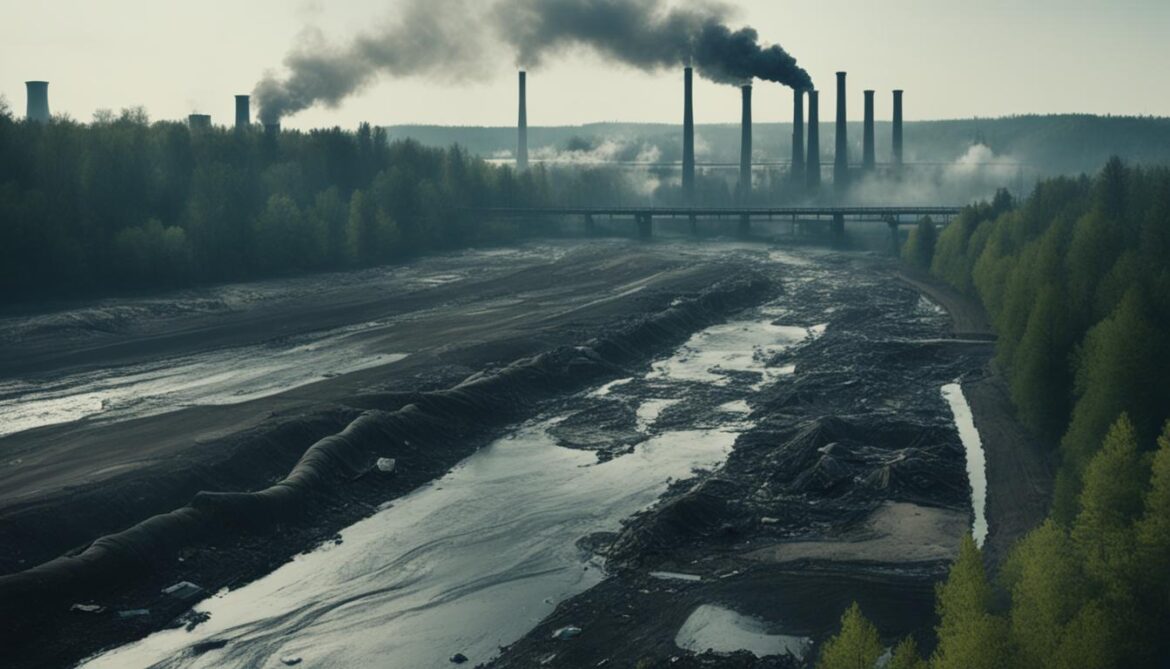
The Importance of Nature in Policy Decision-Making
An important factor contributing to nature loss and the threats facing Ireland’s biodiversity is the lack of visibility of nature in policy decision-making. The National Economic & Social Council (NESC) highlights this fundamental problem, emphasizing the need for greater recognition and integration of nature’s importance into policy decisions.
“Nature conservation should not be an afterthought in policy decision-making; it should be central to our approach. The future of Ireland’s biodiversity depends on the incorporation of nature protection and restoration measures into all relevant policies,” says Dr. Laura Burke, Director General of the Environmental Protection Agency (EPA).
By integrating nature conservation into policy decision-making processes, we can ensure that environmental protection is given due consideration and that the impacts on biodiversity are accurately assessed. It means acknowledging the intrinsic value of nature and recognizing that its conservation goes hand in hand with sustainable development and the well-being of current and future generations.
Accountability is a key aspect of effective policy decision-making. It involves taking responsibility for the consequences of our actions and ensuring that policies and actions align with the goal of nature conservation. Legislative frameworks that hold decision-makers accountable for the protection and restoration of natural habitats are essential to reverse the trends of decline.
Collaboration among NGOs, local authorities, and communities plays a significant role in shaping policy decisions and implementing nature conservation measures. Through collective efforts and shared responsibility, we can create a more sustainable future by prioritizing biodiversity conservation and ensuring that policies reflect the importance of nature in all aspects of decision-making.

The Role of NGOs, Local Authorities, and Communities
NGOs, local authorities, and communities play a vital role in advocating for nature conservation and influencing policy decision-making processes. Their expertise, grassroots efforts, and community engagement contribute to the development and implementation of effective conservation strategies. By actively participating in consultations, providing scientific knowledge, and raising awareness about the importance of nature, these stakeholders have the power to shape policies that prioritize biodiversity protection.
Examples of Successful Collaboration
One successful example of collaboration between NGOs, local authorities, and communities is the Burren Programme in County Clare. This initiative aims to conserve the unique limestone landscape of the Burren while supporting sustainable agricultural practices. Through the involvement of local farmers, scientific experts, and conservation organizations, the program protects biodiversity, maintains cultural heritage, and provides economic opportunities for local communities.
Another example is the Dublin Bay Biosphere Partnership, a collaboration between Dublin City Council, Fingal County Council, Dún Laoghaire-Rathdown County Council, and South Dublin County Council. This partnership works to balance conservation efforts with human activities in the Dublin Bay area, promoting sustainable tourism, education, and community involvement in nature conservation.
Nature Conservation in Policy Decision-Making: A Call for Change
As Ireland faces increasing challenges in protecting its biodiversity, it is crucial to prioritize nature conservation in policy decision-making. This requires recognizing the value of nature, establishing accountability mechanisms, and fostering collaboration among NGOs, local authorities, and communities. By incorporating nature into policy decisions, we can ensure a sustainable future for Ireland’s rich and diverse natural heritage.
Conservation Efforts to Restore and Protect Biodiversity
Despite the challenges facing Ireland’s biodiversity, significant progress is being made through various conservation initiatives. Efforts to restore and protect habitats and species include programs focusing on the conservation of protected areas, restoration projects in national parks, and habitat-focused initiatives. Incentives for nature-friendly farming and forestry practices also contribute to biodiversity conservation. Collaboration with landowners and communities is integral to the success of these initiatives, which are gradually reversing some of the declines and restoring crucial ecosystems like peatlands.
One important conservation initiative is the establishment and management of protected areas. These designated spaces, such as national parks, nature reserves, and wildlife sanctuaries, provide a safe haven for flora and fauna. They ensure that critical habitats are preserved from destructive human activities and provide essential breeding grounds and migration routes for many species.
Nature-friendly farming and forestry practices also play a significant role in biodiversity conservation. By promoting sustainable agricultural practices that protect and enhance the natural environment, such as organic farming and agroforestry, these initiatives help maintain healthy ecosystems and promote the coexistence of agriculture and wildlife.
“Conservation is not just the responsibility of organizations or governments; it requires the active participation of landowners and local communities. Collaboration is key to the success of conservation efforts, as it allows for the sharing of knowledge, resources, and expertise.”
Habitat restoration is another crucial aspect of biodiversity conservation. Restoration projects aim to rehabilitate degraded ecosystems and recreate habitats that support native flora and fauna. This may involve activities such as reforestation, wetland restoration, and species reintroduction.

The Importance of Collaboration in Conservation
The success of conservation initiatives relies heavily on collaboration between various stakeholders, including government agencies, non-governmental organizations (NGOs), landowners, and local communities. By working together towards a common goal, these diverse groups can pool their resources and expertise, making a more significant impact on biodiversity conservation.
Collaboration with landowners is especially crucial, as they often manage large areas of land that contain important habitats and species. By engaging landowners in conservation efforts and providing them with incentives and support, it becomes possible to create a network of protected areas and restored habitats that can benefit both wildlife and the local community.
In conclusion, despite the challenges posed by habitat loss, pollution, and declining species, conservation initiatives in Ireland are making progress in restoring and protecting biodiversity. Efforts such as the conservation of protected areas, nature-friendly farming practices, and habitat restoration projects are essential for preserving Ireland’s unique natural heritage. By working collaboratively, we can ensure the long-term survival of species and ecosystems, creating a sustainable future for both nature and human communities.
The Role of Enforceability in Biodiversity Action
The fourth national biodiversity action plan (NBAP) in Ireland introduces an essential component to drive impactful change: enforceability. With enforceability, public bodies can be legally compelled to take action in protecting and restoring Ireland’s biodiversity. This goes beyond superficial efforts like planting trees and flower beds and emphasizes the need for tangible actions that make a real difference.
By holding public bodies accountable through legal obligations, enforceability ensures that conservation efforts are not merely symbolic gestures but result in meaningful actions to safeguard Ireland’s precious natural heritage. It provides a framework for public bodies to actively contribute to species conservation, habitat protection, and ecosystem restoration. This approach is crucial for addressing the critical threats facing Ireland’s biodiversity and reversing the trends of decline.
Furthermore, the new EU nature restoration regulation, with its legally binding targets, will further enhance the impact of biodiversity action. This regulation will drive nature restoration efforts, particularly in regions with high potential for carbon capture, prevention of natural disasters, and enhanced ecosystem functioning. The combination of national enforceability and EU regulations creates a robust framework for comprehensive biodiversity conservation in Ireland.
“Biodiversity action requires more than good intentions; it requires decisive actions and legal obligations to protect our natural heritage.”
The implementation of enforceability measures demonstrates Ireland’s commitment to addressing the urgent challenges of biodiversity loss and habitat degradation. By ensuring that public bodies take proactive steps to conserve and restore biodiversity, enforceability paves the way for a sustainable future where Ireland’s unique ecosystems and species can thrive.
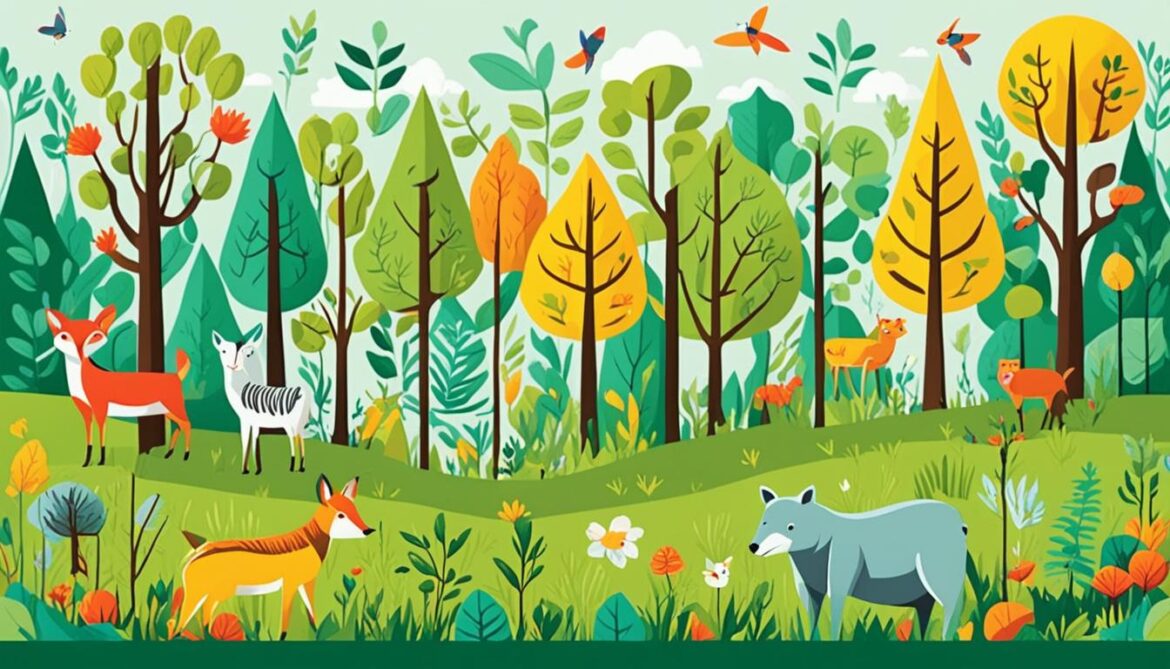
| Action | Benefits |
|---|---|
| Protection of endangered species | Preserve biodiversity for future generations |
| Habitat restoration | Recover and enhance ecosystem functions |
| Conservation of ecosystem services | Support human well-being and sustainable development |
| Enhanced resilience to climate change | Mitigate the impacts of global warming |
| Strengthened collaboration between public bodies, NGOs, and communities | Facilitate effective conservation efforts |
The Need for Natural Capital Accounting in Conservation
Natural capital accounting plays a vital role in better accounting for nature’s value and integrating environmental data into the system of national accounts for economic activity. By incorporating the principles of natural capital accounting, we can accurately measure and value the benefits that nature provides to society.
Collaboration with nature is crucial for sustainable development and effective conservation efforts. Natural capital accounting allows us to understand the importance of our ecological resources and make informed decisions regarding resource allocation. It helps us recognize the economic value of ecosystem services, such as clean air, water, and soil, and their contribution to economic activity.
The National Economic & Social Council (NESC) emphasizes the importance of natural capital accounting in addressing the challenges of protecting and restoring Ireland’s biodiversity. By determining the economic value of natural resources, we can demonstrate the true worth of conservation efforts and advocate for adequate funding and policies to ensure their preservation.
“Natural capital accounting enables us to collaborate with nature and integrate sustainability into economic decision-making.”
Benefits of Natural Capital Accounting
1. Improved Decision-making: Natural capital accounting provides a comprehensive framework for evaluating environmental assets and their role in supporting economic activity. This enables policymakers, businesses, and communities to make more informed decisions that balance economic growth and environmental sustainability.
2. Measuring Environmental Impact: Accounting for natural capital allows for the quantification and monitoring of environmental data, including the impact of economic activities on the environment. This information can help identify areas of concern and guide targeted conservation efforts.
3. Valuing Ecosystem Services: Natural capital accounting allows us to assign economic values to the services and benefits provided by ecosystems, such as carbon sequestration and water purification. This valuation helps raise awareness about the economic importance of conserving natural resources.
4. Enabling Collaboration: By recognizing the value of natural capital, different stakeholders, including governments, communities, and businesses, can collaborate more effectively towards common conservation goals. This collaboration promotes the development of innovative solutions and enhances the effectiveness of conservation efforts.
Case Study: Environmental Accounting in Ireland
In Ireland, the Department of Environment, Climate and Communications has implemented the System of Environmental-Economic Accounts (SEEA) to integrate environmental data into the national accounts. This provides a holistic view of the interactions between the economy and the environment.
| Benefits of SEEA in Ireland | Challenges |
|---|---|
|
|
Continued efforts are being made to improve data collection and analysis to enhance the effectiveness of natural capital accounting in guiding conservation actions.

The American Skunk Cabbage: An Invasive Species in Ireland
The American skunk cabbage, scientifically known as Lysichiton americanus, is a non-native, invasive species that has made its way to Ireland. Originally from western North America, this plant has become a cause for concern as it has the ability to form dense and impenetrable patches in wetland sites. These patches can exclude other vegetation, disrupting the delicate balance of ecologically sensitive wetland ecosystems.
“The American skunk cabbage’s invasive nature poses a threat to the biodiversity of wetland sites in Ireland. It has the potential to outcompete and displace native plants, leading to a loss of habitat for other species.”
Although the American skunk cabbage is no longer commonly planted as a garden plant, it was intentionally introduced to Woodfield Bog in Co. Offaly during the 1930s. Since then, its spread is believed to be occurring naturally, which means it could take many years for the species to become well-established in new areas.
The Impact on Wetland Sites
Wetland ecosystems are unique and valuable habitats that support a diverse range of plant and animal species. They play crucial roles in water filtration, flood prevention, and carbon sequestration. However, the invasion of the American skunk cabbage poses a significant threat to the delicate balance of these ecosystems.
- The dense patches of the American skunk cabbage can outcompete and displace native plants, reducing the availability of food and shelter for other species.
- Its dominance can alter the hydrology of wetland sites, leading to changes in water flow patterns and nutrient cycling.
- The chemical compounds released by the plant can inhibit the growth of neighboring plants and disrupt the natural interactions within the ecosystem.
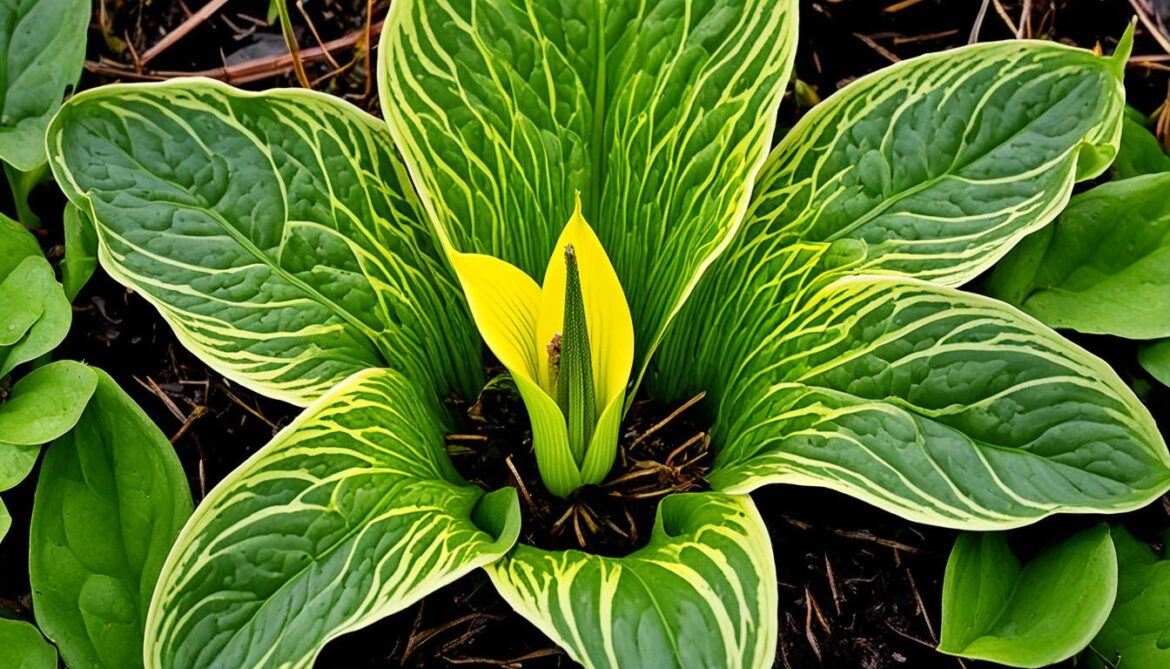
This image illustrates the distinctive yellow flowers of the American skunk cabbage, which allow for easy identification in the field.
Managing the American Skunk Cabbage
Effective management strategies are necessary to prevent the further spread and impact of the American skunk cabbage in Ireland’s wetland sites. These strategies may include:
- Early detection and rapid response to new infestations to prevent the establishment of the species in new areas.
- Monitoring and research to better understand the plant’s behavior and potential impacts on native biodiversity.
- Control measures such as the manual removal of plants, herbicide treatments, or physical barriers to limit the expansion of the species.
- Restoration and rehabilitation of affected wetland sites to encourage the recovery of native plant and animal communities.
Table: Summary of the Impact and Management of the American Skunk Cabbage
| Impact | Management |
|---|---|
| Dense patches outcompeting native plants | Manual removal, herbicide treatment |
| Alteration of wetland hydrology | Maintaining natural water flow patterns |
| Disruption of ecosystem interactions | Physical barriers, restoration efforts |
It is crucial to address the presence and impact of the American skunk cabbage to protect the integrity of Ireland’s wetland sites. By implementing effective management strategies and raising awareness about the invasive nature of this species, it is possible to mitigate its negative effects and preserve the biodiversity of these valuable ecosystems.
Positive Signs and Future Outlook for Biodiversity Conservation
Despite the immense challenges faced by Ireland’s biodiversity, there are encouraging indications that nature loss can be reversed. It is crucial to scale up conservation actions on the ground and foster collaboration among various stakeholders to achieve this goal.
The dedication and efforts of community-level organizations, NGOs, and local authorities play a vital role in protecting and restoring habitats and wildlife. Their commitment brings positive change and helps restore Ireland’s biodiversity.
Collaboration with landowners is another essential aspect of conservation efforts. Initiatives focusing on working together with landowners have proven effective, as they have a vested interest in preserving their local environments and nurturing biodiversity.
Conservation projects and funding streams that prioritize collaboration have yielded significant results. These initiatives ensure that resources are allocated efficiently and effectively, maximizing the positive impact on biodiversity.

Collaboration is the key to reversing nature loss and safeguarding Ireland’s unique natural heritage.
The future outlook for biodiversity conservation in Ireland holds promise. By continuing to build on the positive signs and strengthening collaborative efforts, we can make significant progress in reversing the trends of decline and restoring Ireland’s diverse ecosystems.
Community-Level Conservation Initiatives
Community-level conservation initiatives have been instrumental in protecting and restoring biodiversity across Ireland. These initiatives bring together local communities, individuals, and organizations to work collectively towards a common goal – preserving and enhancing the natural environment.
Through community-driven projects, awareness campaigns, and volunteering opportunities, communities actively participate in conservation efforts. This grassroots approach fosters a sense of ownership and responsibility, ensuring the long-term sustainability of conservation actions.
| Community-Level Conservation Initiatives | Key Benefits |
|---|---|
| Wildlife monitoring and habitat restoration programs | Promote biodiversity regeneration and create healthy ecosystems |
| Educational workshops and awareness campaigns | Enhance environmental stewardship and inspire future conservationists |
| Collaboration with local businesses for sustainable practices | Integrate conservation values into the local economy |
| Conservation volunteering opportunities | Engage community members and develop a sense of environmental responsibility |
These community-level initiatives not only contribute to reversing nature loss but also foster stronger connections between communities and the natural world. By empowering individuals and encouraging collaboration, we can create a brighter future for Ireland’s biodiversity.
The Importance of Biodiversity for Wellbeing and the Economy
Biodiversity plays a crucial role in maintaining ecological stability, but its importance extends beyond that. It is essential for the wellbeing of both individuals and the economy. The diverse range of ecosystem services provided by biodiversity directly contribute to our mental and physical wellbeing.
Ecosystem services such as clean air, water, soil, and trees have a significant impact on our overall health. Clean air and water are vital for respiratory health and hydration, while healthy soil promotes nutrient-rich crops and a sustainable food system. Trees, not only beautify our surroundings, but also provide shade, absorb carbon dioxide, and improve air quality.
Beyond the direct benefits to human health, biodiversity also serves as a valuable recreational resource. Nature-based activities, such as hiking, birdwatching, and wildlife photography, promote physical activity, reduce stress, and enhance mental wellbeing. Being immersed in natural environments has been proven to have positive effects on concentration, creativity, and overall happiness.
“Spending time in nature has a powerful impact on our mental and physical wellbeing. It provides a sense of peace and tranquillity, helping us to disconnect from our busy lives and find solace in the beauty of the natural world.” – Dr. Emma Jones, Environmental Psychologist
Additionally, biodiversity plays a vital role in supporting the economy. Nature-based tourism relies heavily on the unique landscapes, wildlife, and natural attractions that biodiversity provides. Visitors are drawn to destinations that offer opportunities to engage with nature, contributing to local economies through accommodation, dining, and recreational activities.
Recognizing the economic value of biodiversity is crucial for promoting its conservation and sustainable use. Investments in biodiversity conservation not only protect valuable natural resources but also support industries that rely on ecosystem services. By preserving and restoring habitats, we ensure the long-term availability of these services and contribute to the resilience and prosperity of our economies.
The Economic Value of Biodiversity
| Ecosystem Service | Economic Value |
|---|---|
| Clean Air | £X billion annually |
| Clean Water | £X billion annually |
| Soil Fertility | £X billion annually |
| Tourism Revenue | £X billion annually |
Biodiversity is a priceless asset that benefits us both personally and economically. By valuing and protecting our natural heritage, we can ensure a sustainable future that benefits both current and future generations.
Key Takeaways:
- Ireland’s biodiversity encompasses a wide array of animal and plant species.
- Wildlife conservation is essential for preserving Ireland’s natural heritage.
- Protecting natural habitats is crucial to sustaining biodiversity.
- Endangered species require proactive measures to prevent their extinction.
- Environmental protection efforts are vital in safeguarding Ireland’s biodiversity.
Conclusion
Ireland’s biodiversity is a precious and unique asset that requires urgent action to conserve and protect its species and habitats. With the collaboration of communities, NGOs, and local authorities, we can work together to safeguard Ireland’s natural heritage.
Protecting and restoring natural habitats is crucial in ensuring the survival of Ireland’s biodiversity. By conserving endangered species and their habitats, we can reverse the trends of decline and create a sustainable future for our rich and diverse ecosystems.
Through the enforceability of the national biodiversity action plan and the implementation of nature restoration regulations, we have the potential to make a significant impact. By prioritizing species conservation, habitat protection, and collaboration, we can shape a brighter future for Ireland’s biodiversity and ensure its long-term survival.





